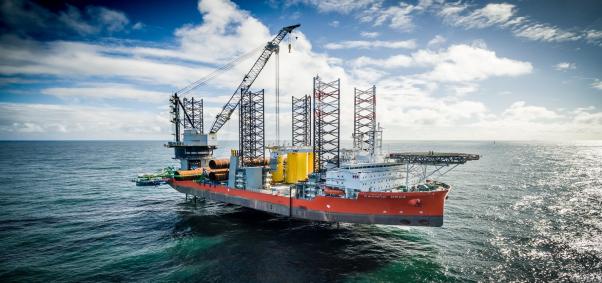
This article was written in Indian Express on April 10, 2015.
Rajat Kathuria is the Director and Chief Executive of ICRIER. Nicholas Stern is co-chair of the Global Commission on the Economy and Climate and IG Patel professor of economics and government at the London School of Economics and Political Science.
Take a deep breath. You have just increased your chances of having a lower life expectancy, as you will know if you have been following this newspaper’s campaign on the subject of Delhi’s air. That is because India’s urban air pollution regularly reaches dangerously poor-quality levels. India frequently outpaces China on poor air quality — a competition with no winner.
Of the 30 cities in the world with the worst of the outdoor particulate matter (PM 2.5) pollution, 15 are in India, contributing to over 6,00,000 premature deaths from this type of pollution. Delhi has the worst outdoor air pollution of any city worldwide, around 150 micrograms per cubic metre, which is 15 times higher than the World Health Organisation’s recommended limit. Air pollution levels like these cost India dearly. Recent research from the Global Commission on the Economy and Climate has found that the economic cost of premature deaths from air pollution in India is equivalent to over 6 per cent of GDP.
The high personal and economic costs of air pollution have become a topic of national debate in China. Just last month, Chai Jining, a former TV journalist, released a self-produced documentary called Under the Dome about China’s air pollution crisis. In one weekend, the film had already been watched 200 million times and China’s new environment minister admitted that he had watched it as well. It certainly got people talking about air pollution and the cost to human lives.
A similar conversation has only just begun in India. There is a way to power the Indian economy and deliver strong, sustainable growth without the harmful side effects of air pollution from the burning of fossil fuels, such as coal and diesel. But it means revising old ways of thinking, making smart policy and investment choices now, and seizing a moment of opportunity.
First, there needs to be a shift away from the old argument that taking action on climate would harm India’s economy. Not only is that a false premise, but we now have striking evidence that climate action can actually spur economic growth.
Research on China undertaken for the Global Commission has shown that a fast transition away from coal use and an early peaking of emissions is in China’s own self-interest, given the associated air pollution and dependence on fossil fuel imports, with their increasingly volatile prices. Sustainability is at the core of China’s “new normal”. If China understood 20 years ago what it knows now, it would have gone down a different route in its structure of cities and use of coal. Indeed, the latest figures show that China’s consumption of coal has stopped rising.
The economic case is also strong for India to achieve its “new normal”: high-quality, strong economic growth with low pollution, congestion and waste, attractive and liveable cities, and a clean and secure energy system.
Second, smart investment choices are needed now in order to power the economic growth that India aspires to and, indeed, deserves, and to provide electricity for the 300 million Indians who lack it. But its energy choices should not be mortgaged against the health of its children. It simply cannot come at the cost of the severe air pollution choking Delhi and other Indian cities today.
There is cause for optimism, because India is on the verge of a profound transformation in how energy is produced. This government has already set ambitious renewable energy targets — solar alone will grow by five times above previous targets — that are worthy of praise. This is a decisive step towards providing energy that is cleaner and, in the long run, likely to be cheaper than continuing to rely on imported coal. And remember, coal is very expensive when one takes account of the severe damage its use causes to people’s health.
Policy shifts, such as increasing concessional development financing for renewables, can reduce their higher upfront financing costs and be enacted as part of an agenda for broader electricity and fuel subsidy reform. Other measures, such as fuel taxes, could promote a more efficient fuel mix that causes less harmful air pollution. Revenues generated through such measures could be used to fund well-designed and targeted measures to shield poor Indians from rising fuel prices and generate resources for education, health and growth.
These policy shifts can literally power economic growth without harmful pollution spillovers. And yet another advantage of a “Made in India” renewable energy agenda is jobs: a recent study by the Council on Energy, Environment, and Water showed that reaching the solar target of 100 GW by 2022 could create 1 million new jobs. And the potential for renewables to go further than what is currently envisaged is tremendous. We estimate that capacity can grow as high as 749 GW for solar and 2,000 GW for wind.
India still faces large development challenges, but it is well positioned to be a global leader for this century: this is its moment of opportunity. It has a government poised to deliver on promises of employment and economic growth for all its citizens. And it is at a crossroads: it can either continue down the carbon-intensive development agenda with huge health implications, or reap the economic benefits of low-carbon growth that could lead to healthy, liveable cities, free from the toxic smog that now envelops them. India’s long-term prosperity and wellbeing hang in the balance. The decisions India takes now will influence the structure of its cities and energy systems long into the future.
India has the opportunity to set its development on a road to a better growth and a better climate. Let us take a deep breath together and seize the moment.






